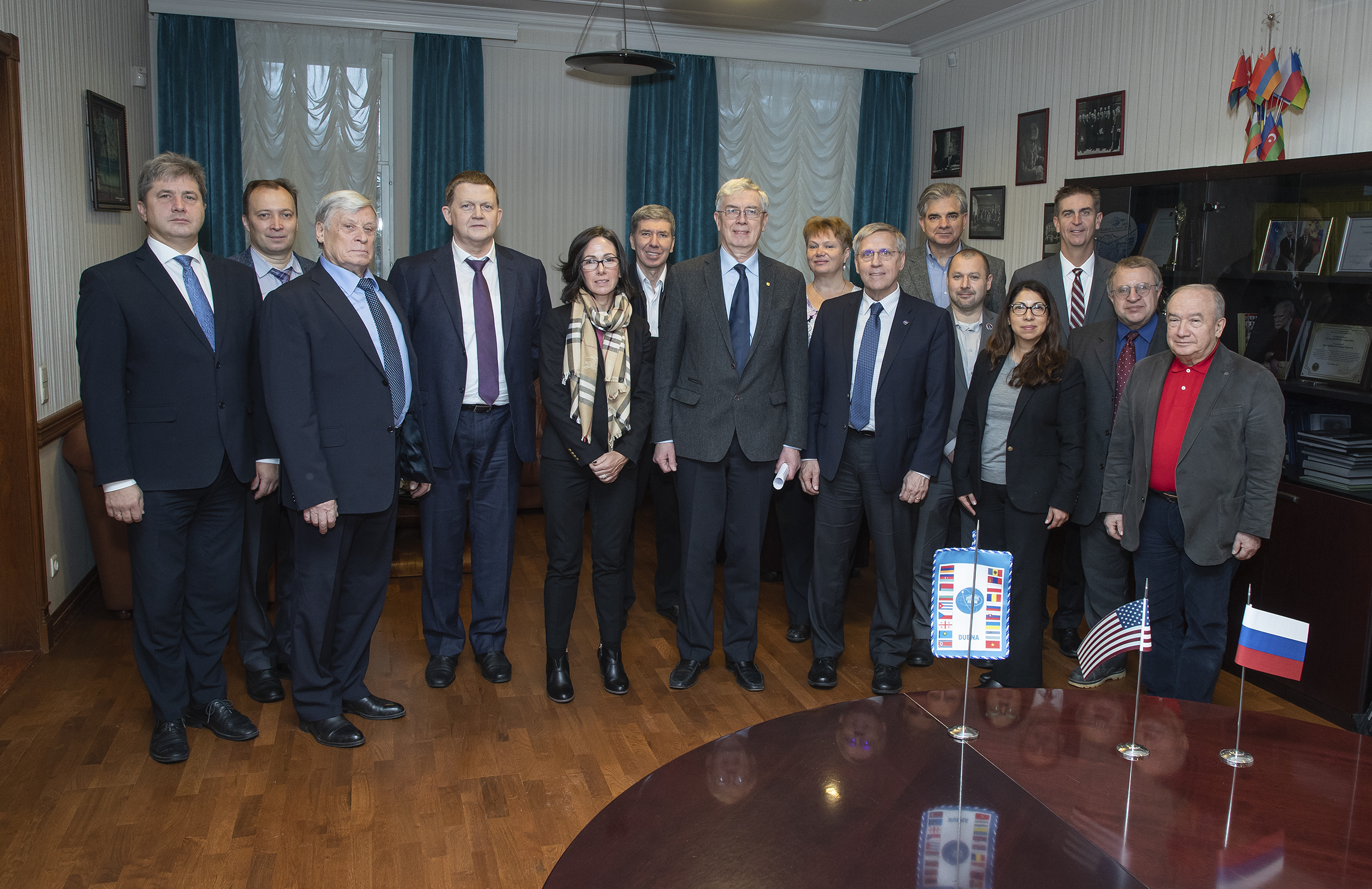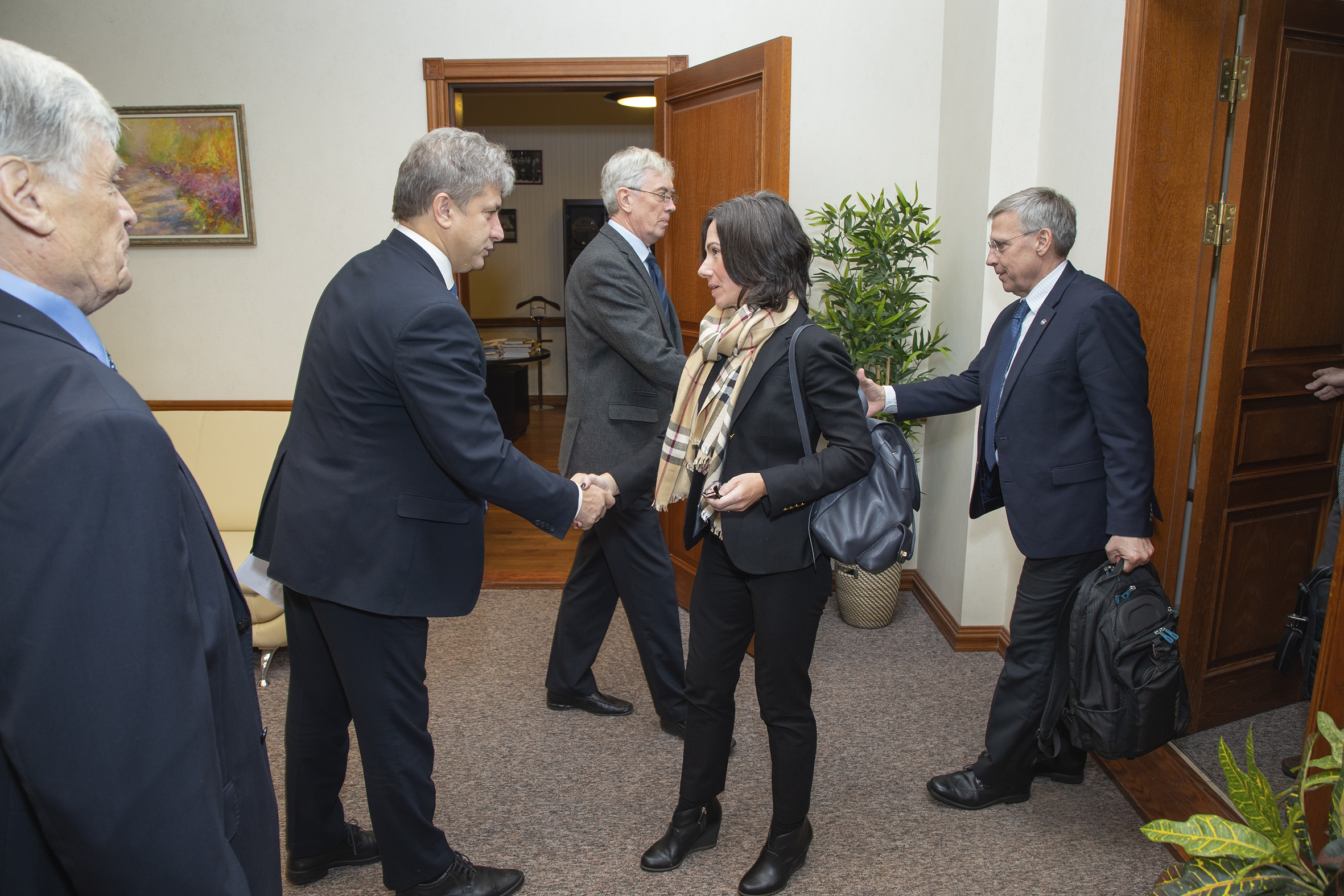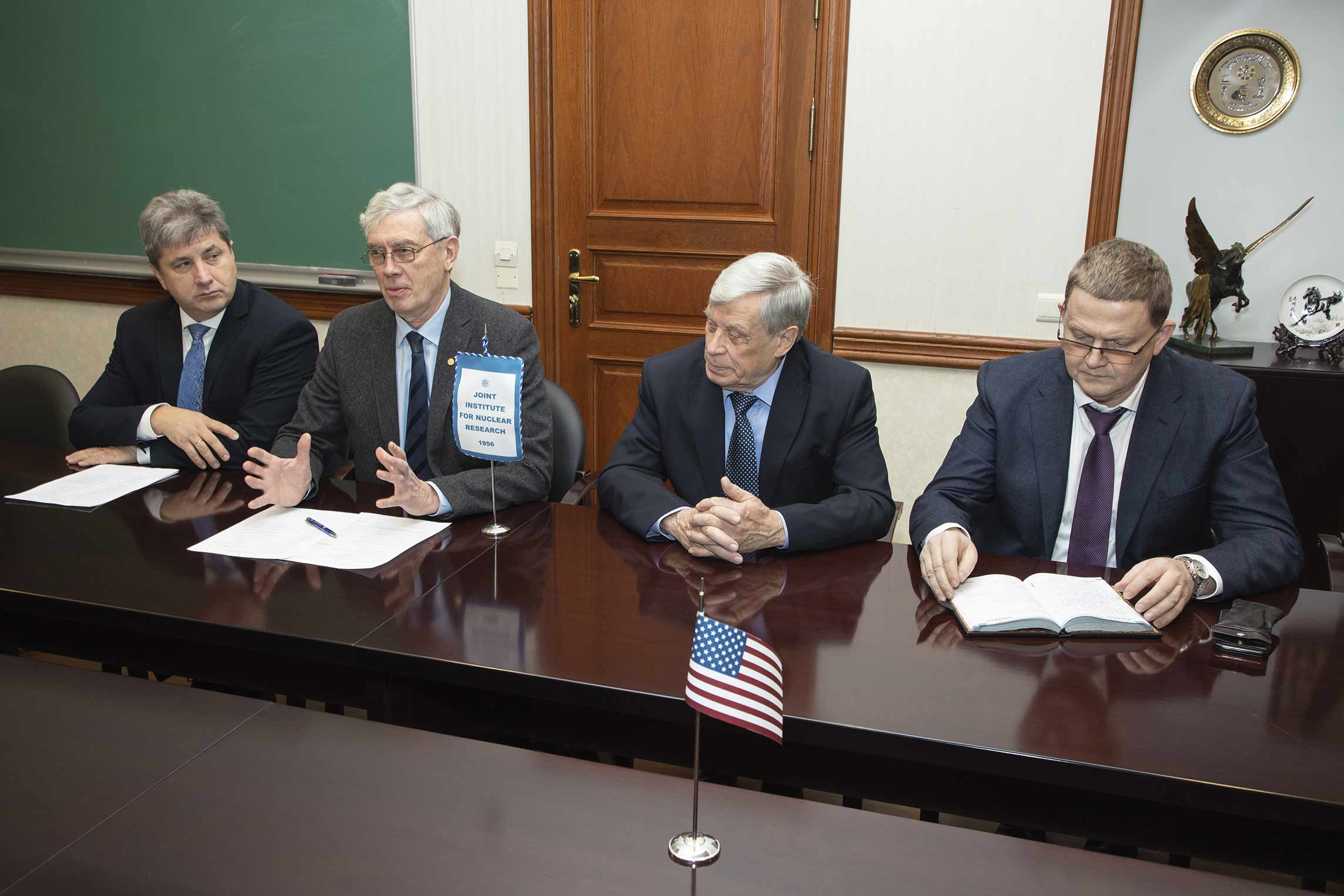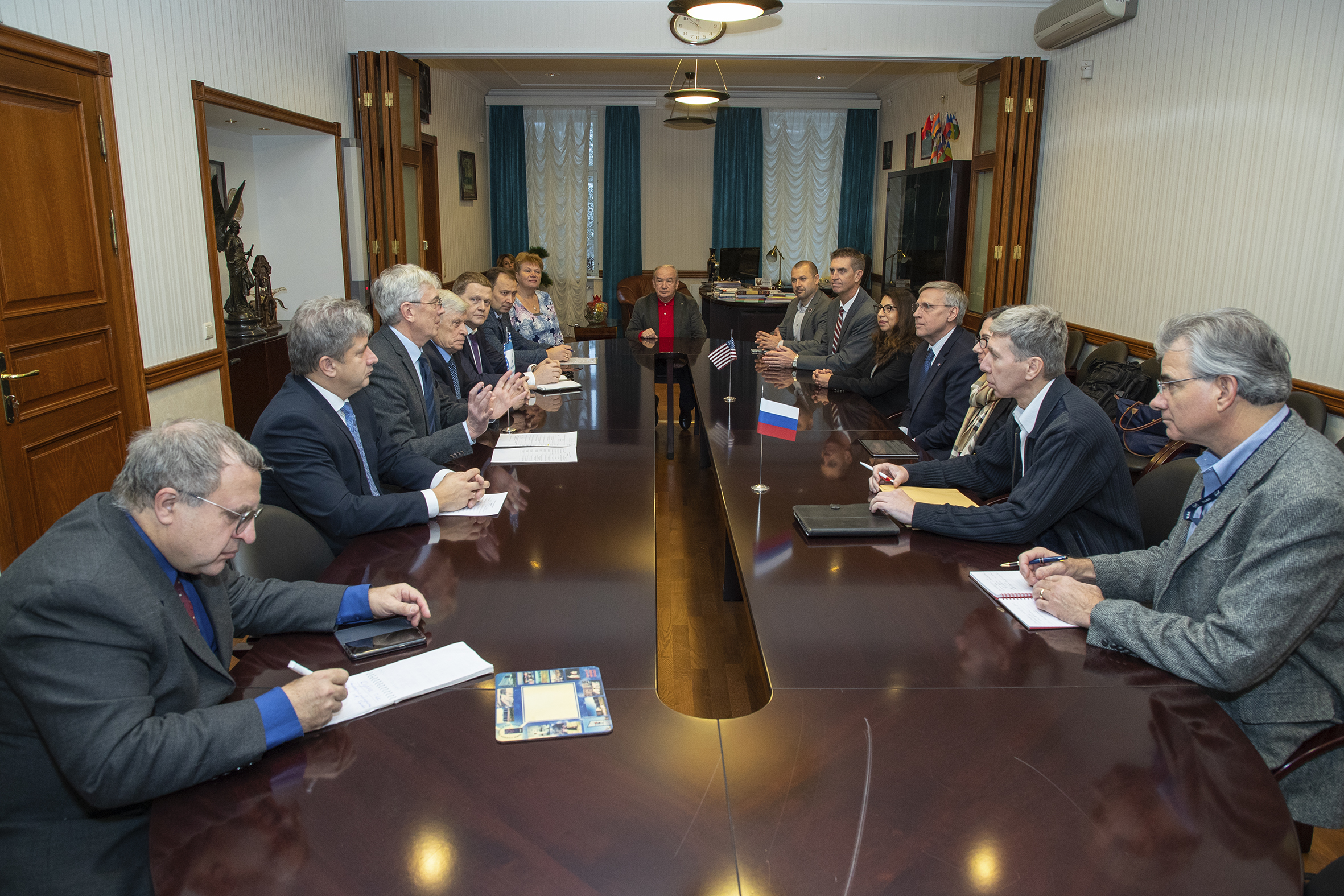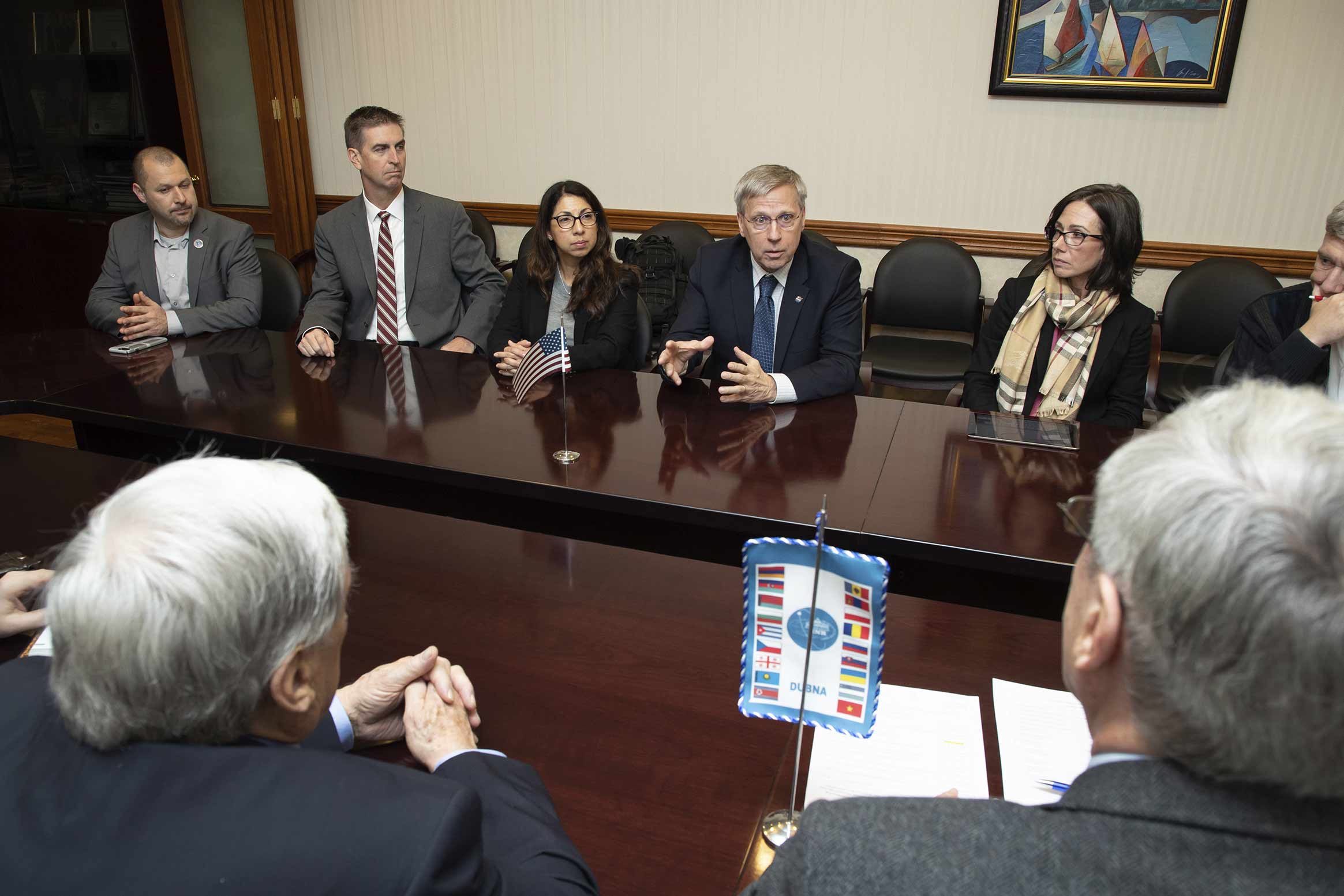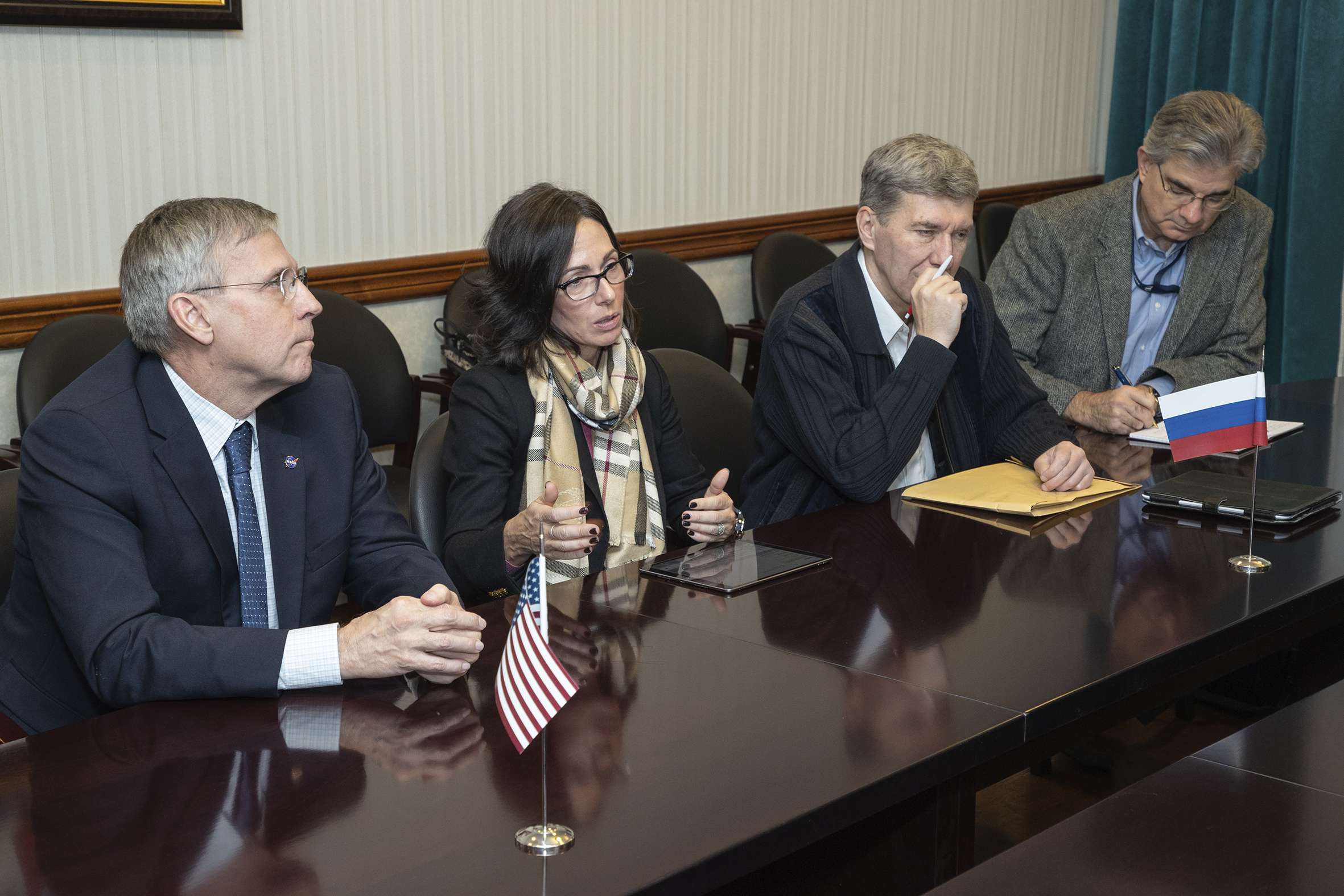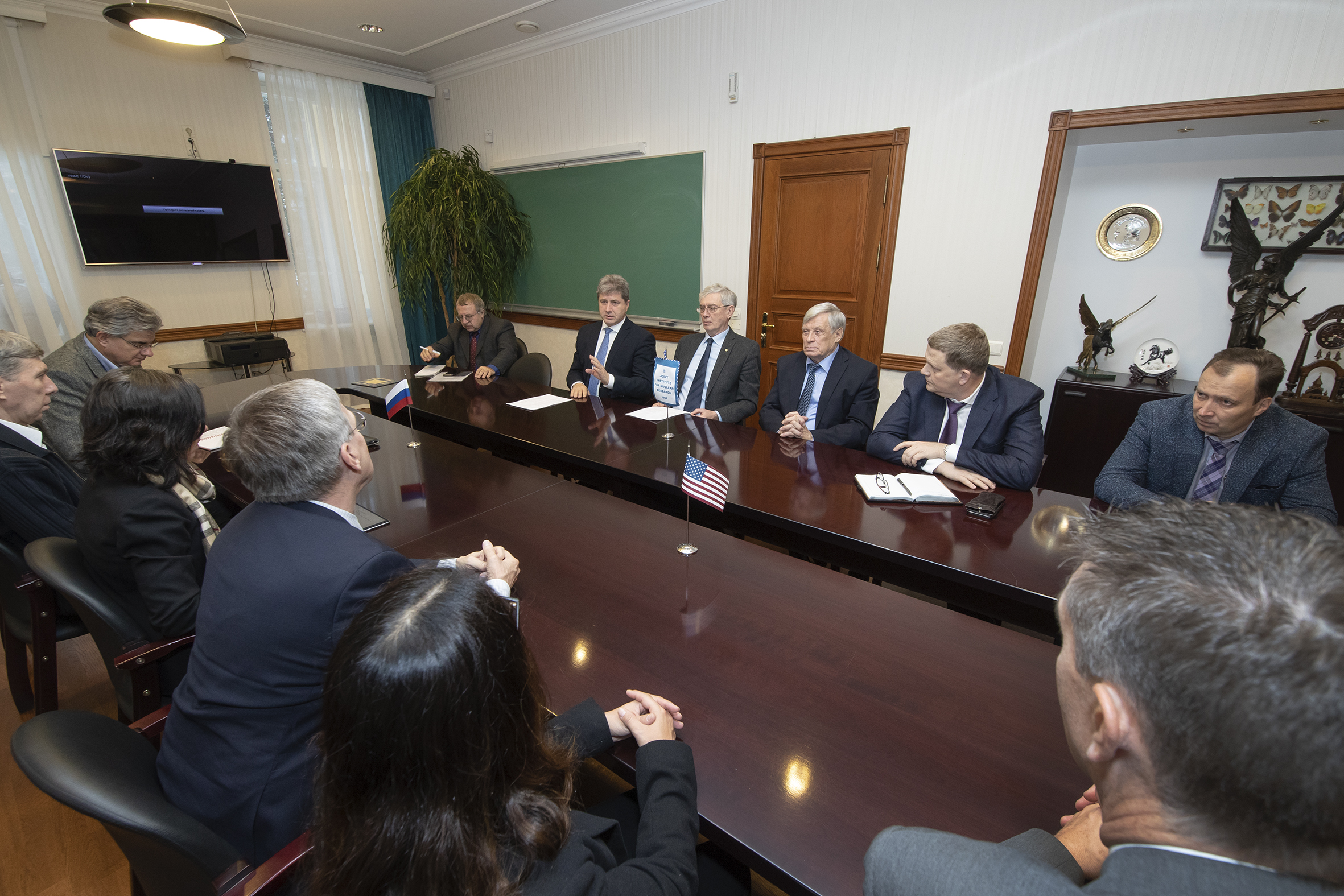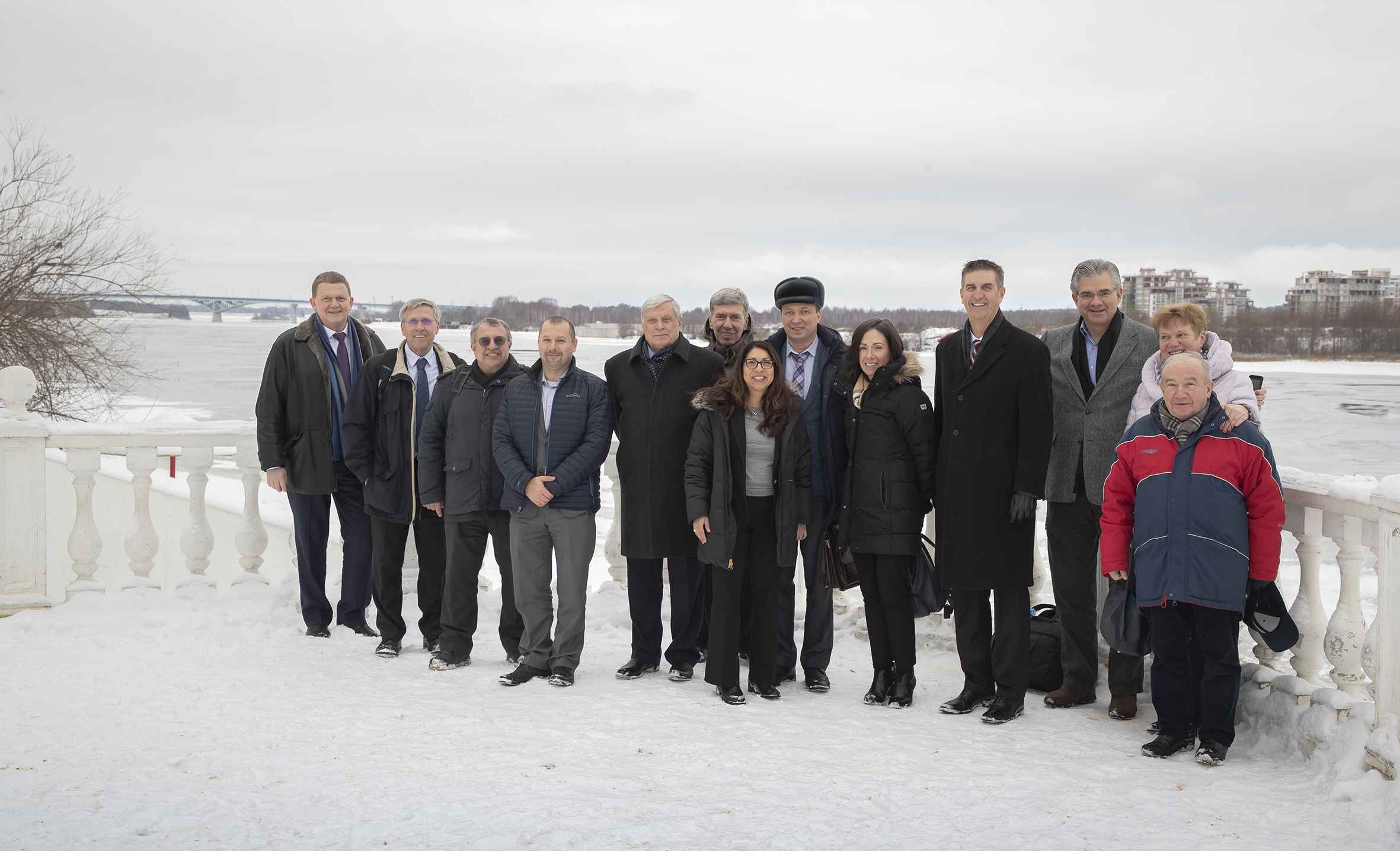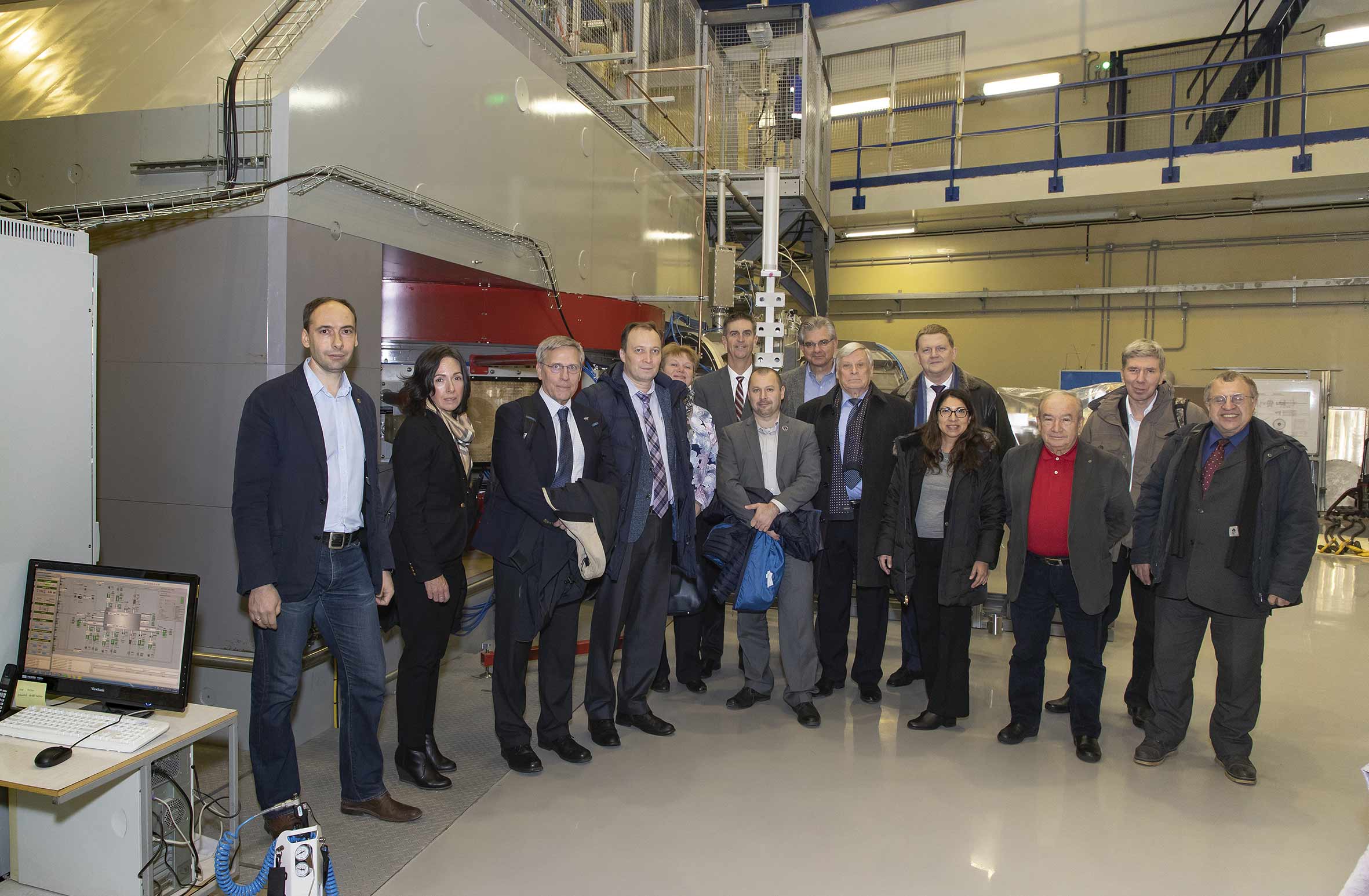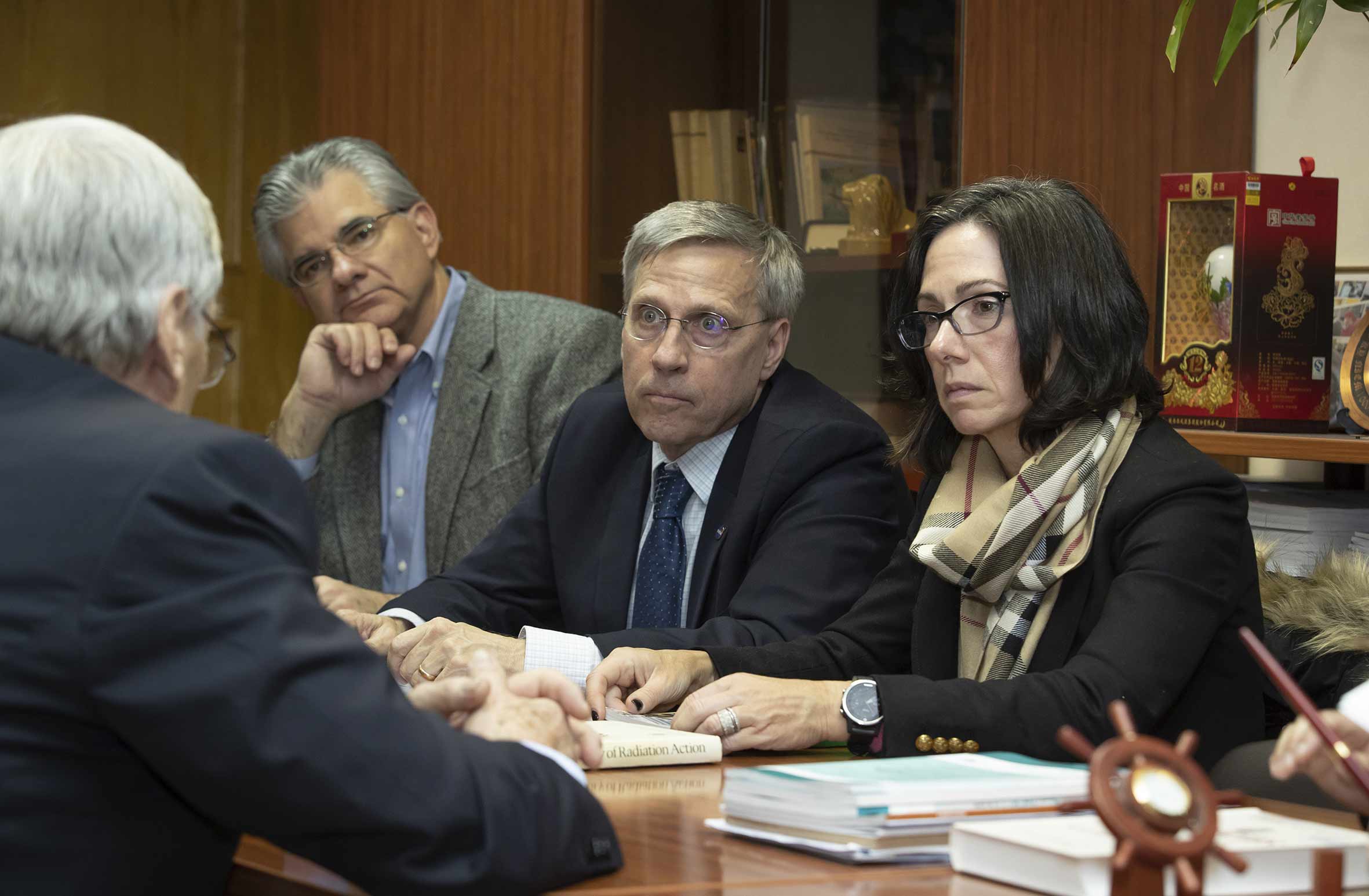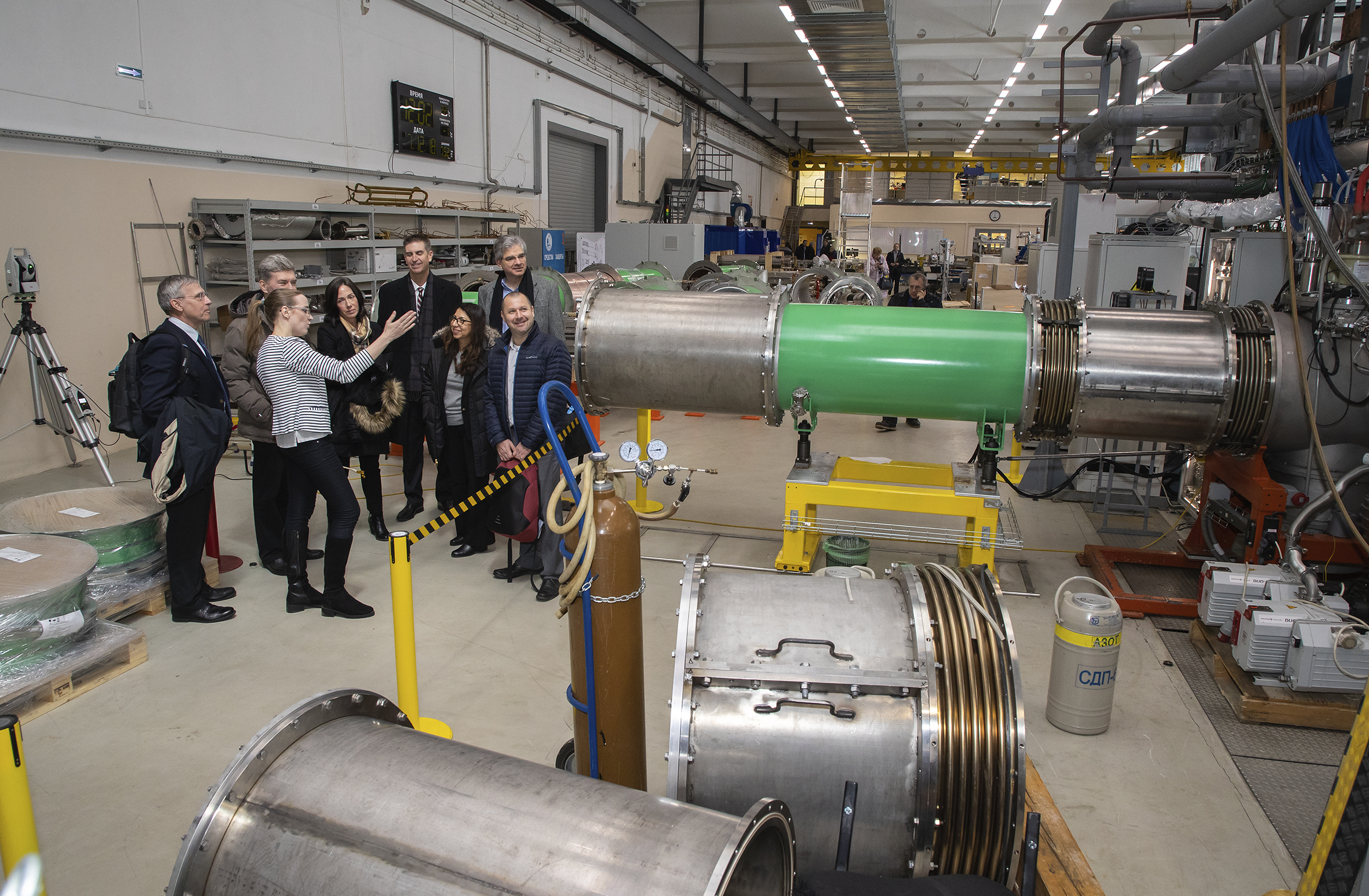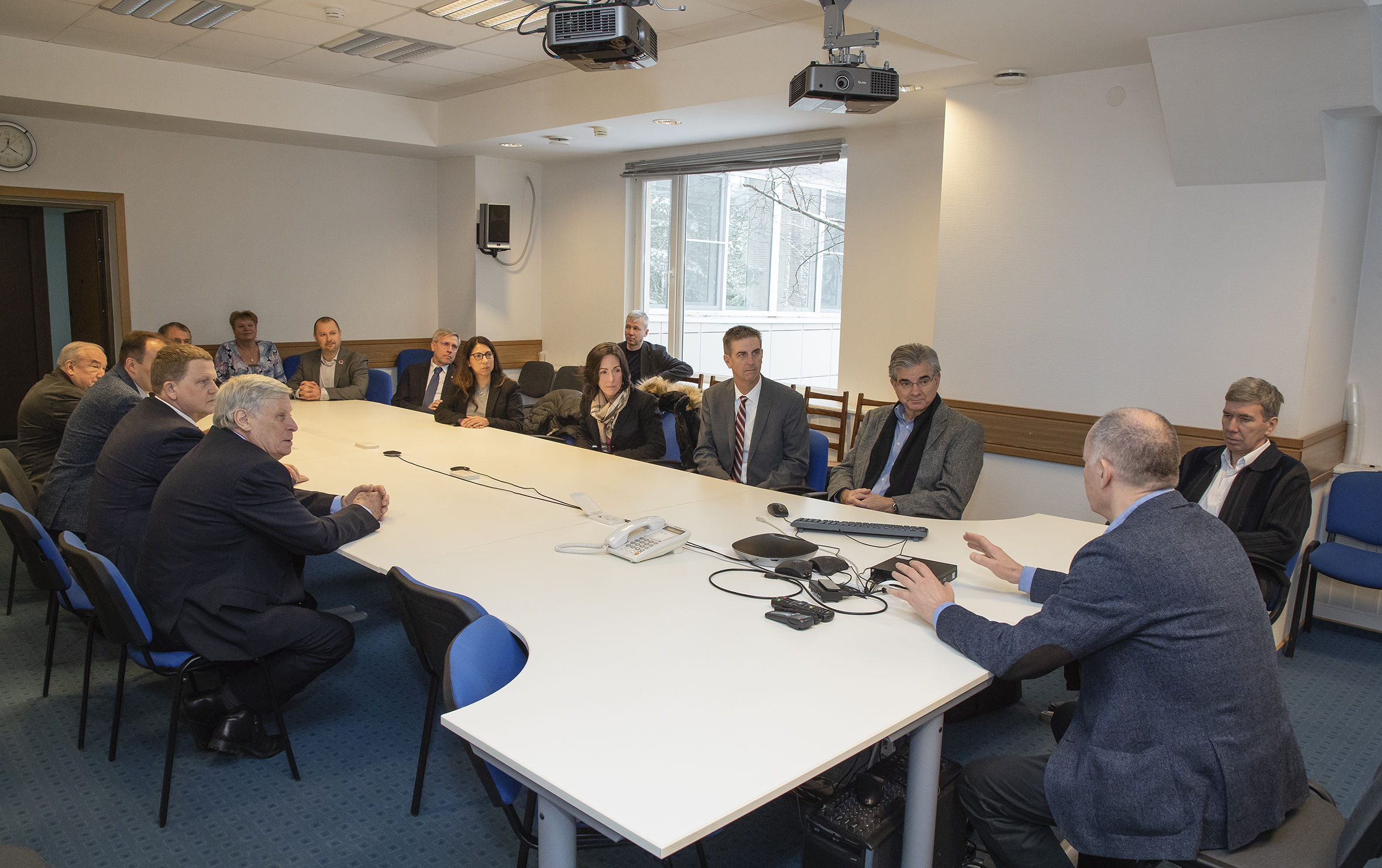NASA representatives visited JINR
News, 11 December 2018
On 7 December 2018, a joint delegation of the National Aeronautics and Space Administration (NASA) and the RAS Institute of Biomedical Problems (IBMP) visited JINR.
The NASA delegation was represented by William Paloski, Director of the NASA Human Research Program (NASA HRP), Jennifer Fogarty, NASA HRP Chief Scientist, Leticia Vega, Associate Chief Scientist on International Collaborations NASA HRP, Thomas Williams, Element Scientist for the Human Factors and Behavioral Performance Element of NASA HRP, Mark Weyland, Director for Medical Policy and Ethics of NASA, and Igor Kofman, NASA HRP International Science Manager. The Institute of Medico-Biological Problems RAS was represented by IBMP Director, Academician O.I. Orlov, as well as IBMP staff members T.N. Agaptseva, M.S. Belakovsky, B.I. Meshcheryakov, and A.V. Shurshakov.
Being the head scientific institute in the fields of safety ensuring in manned space flights, the IBMP coordinates cooperation of Russia with NASA in the field. For several years, IBMP and JINR, in cooperation with MSU and the RAMS Research Institute of Medical Primatology, carry out research at various animals, including primates, on studying the influence of space types of radiation that is one of the scientific interests of NASA. Representatives of the Aeronautics Agency NASA came to Dubna in order to determine possible interests and fields of cooperation in research of influence of heavy charged particles on animals.
Recent results of radiobiological experiments showed that heavy charged particles, being a part of galactic cosmic rays, have a high biological effect. Heavy charged particles have a disastrous influence on higher integrative functions of the central nervous system of experimental animals thus causing spatial disorientation, violation of short-term memory, which can lead to violations of the operator performance of astronauts in flights to the far space. These results were reported by LRB Director E.A. Krasavin in RAS in December 2017 and caused the paradigm shift in the safety of deep space missions thus showing the need in the detailed study of heavy charged particles’ influence at all levels of organization of living objects.
The visit of NASA started in the JINR Directorate where the delegation was welcomed by JINR Vice-Director, Academician B.Yu. Sharkov, Head of the JINR International Cooperation Department D.V. Kamanin, Director of the Laboratory of Radiation Biology, RAS Corresponding Member E.A. Krasavin, and LRB Scientific Secretary I.V. Koshlan.
Acquaintance of the delegation with JINR started in LRB where fields of research and the scientific infrastructure of the Laboratory were introduced to the NASA representatives in detail. A special attention was given to LRB activities in the fields of research of radiation safety in deep space missions. Then, the delegation visited the Veksler and Baldin Laboratory of High Energy Physics where the guests were acquainted with the flagship mega-science project NICA and visited the construction site of the accelerating complex, as well as the factory of superconducting magnets. The acquaintance with JINR was continued in the Flerov Laboratory of Nuclear Reactions where the guests learned about the FLNR activities on the synthesis of superheavy elements and achievements of JINR in this field. The NASA delegation also visited the Factory of superheavy elements.
At a concluding working lunch with representatives of the JINR leadership, NASA representatives noted that the range of scientific research carried out at JINR and the JINR scientific infrastructure very impressed them. The American party expressed its interest in establishing cooperation with JINR in the fields of space radiobiology. During the meeting, a proposal was made to join JINR to the already existing NASA-OMBP RAS collaboration. Development of cooperation in this direction will be further discussed at the milestone extended meeting in the IBMP on 13 – 14 December in Moscow.
Photos by Igor Lapenko
